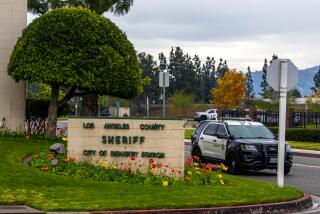Where A-Rod Goes From Here
- Share via
The career of just about every great slugger traces the arc of a home run: It takes off with breathtaking power and swiftness, levels off late in flight and then falls precipitously.
Alex Rodriguez took off faster than any ballplayer in history, but the hardest part of his journey may just be beginning.
A-Rod homered twice Wednesday night in Milwaukee to lock up a win over the Brewers and in the process, at age 29, became the youngest ballplayer to reach the 400-HR plateau.
It wasn’t a big deal in these jaded times. Not even for the Yankees.
They’ve got an old-looking pitching staff, they’d won only twice in their last 11 games and The Boss is breathing down their necks. So you’ll have to pardon them from opting out of the debate over whether Rodriguez will become the greatest hitter of all time. The rest of us can’t use that excuse.
Rodriguez got a polite standing ovation from Milwaukee fans in the eighth inning, a few forearm bashes on his return to the dugout, a souvenir photo holding the bat and ball afterward and this brief tribute from manager Joe Torre:
“That’s pretty incredible,” said Torre, who watched the highlight shot from the clubhouse after getting tossed for arguing a few innings earlier. “The shape he’s in, the way he works, who knows where he’s going.”
For baseball’s sake, it better be far. We’ll get to the daunting challenges Rodriguez will face in the future, but first a few words about what he can do for the game at the present moment. In this, the first season of steroid withdrawal, it’s hard to find a better name to pencil in atop the homer list. And the longer he stays there, the better.
Whatever credibility this era has won’t be provided by suspiciously muscle-bound sluggers Barry Bonds, Sammy Sosa and Mark McGwire. They might be that rare confluence of once-in-a-generation sluggers that their numbers suggest. Or they might be, as someone else suggested, “Harmon Killebrew with a lot of extra at-bats,” propped up past their prime by artificial means.
Rodriguez isn’t muscle-bound or old. Yet. And he’s untainted by steroids. So far.
That means he’ll only have to average 35 home runs for the next 10 years and he’s home free. By now, enough people have crunched the numbers to provide a frame-by-frame reference of how hard that will be. For starters, look at what injuries did to Ken Griffey, whose career home-run pace A-Rod just passed, and the picture comes into sharp focus.
The first thing A-Rod should do is quit dropping hints about not sticking around long enough. His productivity, drive and luck will determine that. More than a few guys would have sold their soul for the chance to keep on playing -- think Mickey Mantle -- and a few apparently already have.
To minimize wear and tear and cut down on collisions, Rodriguez is going to have to leave the infield.
The top 10 spots on the all-time list -- from No. 1 Henry Aaron to 10th-place Rafael Palmeiro -- are claimed by outfielders, first basemen and-or part-time designated-hitters. That’s not a coincidence.
And then there’s the matter of advancing age. As Jayson Stark pointed out on ESPN.com, Rodriguez has such a jump on his competition that he could get knocked out, or sit out, every game beginning Friday and extending until the season-opener in 2007 and still have more home runs than Aaron, Bonds, Willie Mays and McGwire did at the same age.
That same research, however, suggests A-Rod had better make good use of his time. While nine of the top 10 sluggers had their most productive seasons in their 30s, only Aaron and Bonds did when they were closer to 40.
As if all the attention and attendant pressure of being the store-bought Pride of the Yankees wasn’t tough enough -- remember last season’s collapse in the playoffs against the Red Sox or the hype that surrounded A-Rod’s therapy revelations -- the left-field porch in Yankee Stadium may not be short enough.
Stark also notes that Dave Winfield was the only right-handed slugger who played more than five years in Yankee Stadium after age 30 to even approach 300 homers -- and he wound up with 298.
In that same ballpark, right after the introductions at an Old Timers Game in 1974, Yogi Berra took the microphone, flanked by Mantle and DiMaggio, and perfectly summed up the dilemma A-Rod faces.
“The future,” Berra said, “ain’t what it used to be.”
The joint convulsed with laughter, but the guys on either side of Yogi allowed themselves only a rueful smile. Because they knew exactly what he meant.
More to Read
Go beyond the scoreboard
Get the latest on L.A.'s teams in the daily Sports Report newsletter.
You may occasionally receive promotional content from the Los Angeles Times.










